How Cold Is Too Cold For Chickens
- February 14, 2024
- 0 comment
I’ve frequently found myself pondering the limits of cold weather that chickens can comfortably withstand. It’s imperative to recognize the inherent ability of chickens to adapt to cold conditions while also considering the implications for their well-being and the production of eggs.

Additionally, the variance in cold weather tolerance across different chicken breeds is a critical factor in maintaining a flock that remains robust and productive during the colder months. My insights on this matter are drawn from a blend of thorough research and hands-on experience, aiming to provide a well-rounded perspective on how to best support these birds when temperatures drop.
List of How Cold Is Too Cold For Chickens:
- Breed Considerations
- Coop Management and Preparation
- Pros and Cons of Heating the Coop
- Feeding for Cold Weather
- Nest Box Management and Egg Collection
- Supplemental Lighting for Egg Laying
Quantitative Measurements of Cold Tolerance
The general consensus is that temperatures as low as 20°F (-6°C) are manageable for most chicken breeds, especially if they are acclimatized and their coop is well-prepared for winter. However, when temperatures dip below this, particularly to 0°F (-18°C) or lower, even hardy breeds can start to face health issues, such as frostbite on their combs and wattles.
Understanding Chickens’ Cold Tolerance
Navigating the threshold of cold temperatures that chickens can endure requires a nuanced understanding of their physiological resilience against cold, the impact of low temperatures on their health and egg-laying capabilities, and the differences in cold tolerance among various chicken breeds.
This knowledge is essential for anyone looking to keep their chickens healthy and productive during the winter. By delving into both scholarly research and applying practical experience gained from managing a flock, I have developed a comprehensive understanding of the factors that contribute to a chicken’s ability to withstand the cold.
This includes strategies such as optimizing the coop’s environment to protect them from the elements, adjusting their diet to meet their nutritional needs in colder weather, and selecting breeds that are naturally more resistant to cold temperatures. This holistic approach is aimed at ensuring the wellbeing of chickens through the chilliest months, allowing them to continue thriving and laying eggs despite the cold.
1. Breed Considerations
The resilience of chickens to cold largely hinges on their breed characteristics. Certain breeds are inherently better equipped to handle colder climates due to physical traits that offer enhanced protection against low temperatures. For instance, breeds such as Plymouth Rock, Sussex, and Orpington are celebrated for their ability to thrive in cooler conditions.

This capability is attributed to their dense feathering and substantial body mass, which naturally insulate them against the cold. Conversely, breeds characterized by larger combs and wattles, including the Leghorn, face greater risks of frostbite during cold spells.
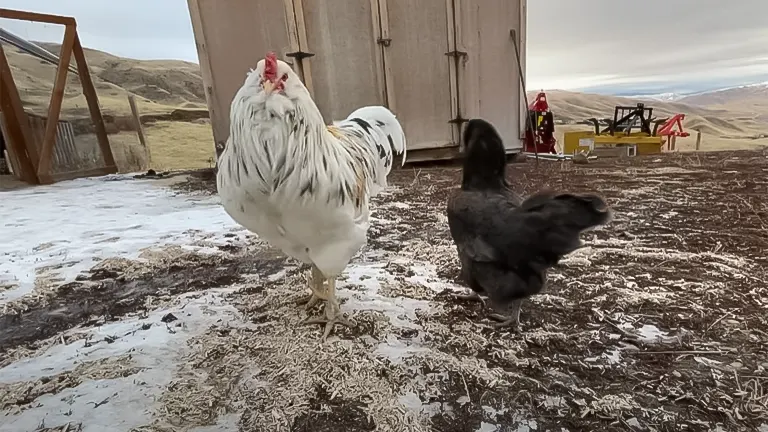
The size of these appendages increases their exposure to the cold, making them more vulnerable to damage from freezing temperatures. This distinction underlines the importance of breed selection based on climatic conditions, emphasizing the need for potential chicken keepers to consider local weather patterns when choosing their flock.
2. Coop Management and Preparation
Winterizing the chicken coop is essential for safeguarding the flock against the cold. Effective coop management strategies focus on balancing insulation with ventilation to create a warm, yet moisture-free environment. Insulation helps in retaining heat within the coop, crucial for keeping the chickens warm during frigid nights.
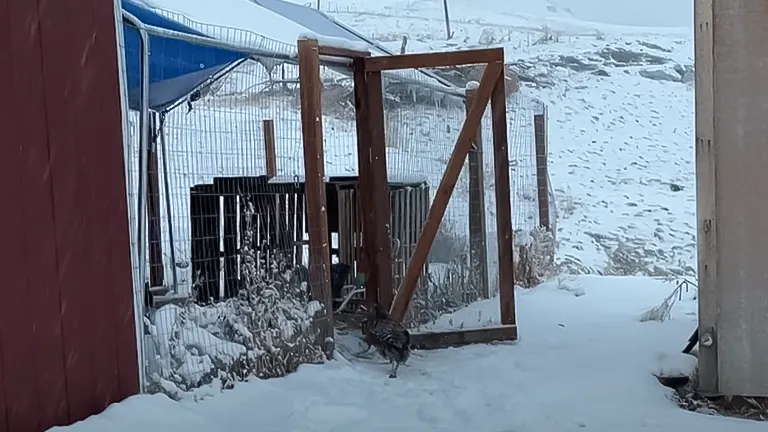
However, without adequate ventilation, moisture can accumulate inside the coop, leading to a damp atmosphere that fosters conditions conducive to respiratory problems and frostbite. My approach involves reinforcing the coop with additional insulation while ensuring there are ventilation openings near the roof.
This design allows warm, moist air to exit the coop, thereby maintaining a dry and warm habitat for the chickens. Such preparations are vital in minimizing the adverse effects of cold weather on the flock’s health and comfort.
3. Pros and Cons of Heating the Coop
The debate over whether to heat the chicken coop in winter is one met with diverse opinions among poultry enthusiasts. Based on personal observations, the drawbacks of introducing artificial heat sources often surpass the benefits. While heaters can provide immediate warmth, they introduce a significant risk of fire.
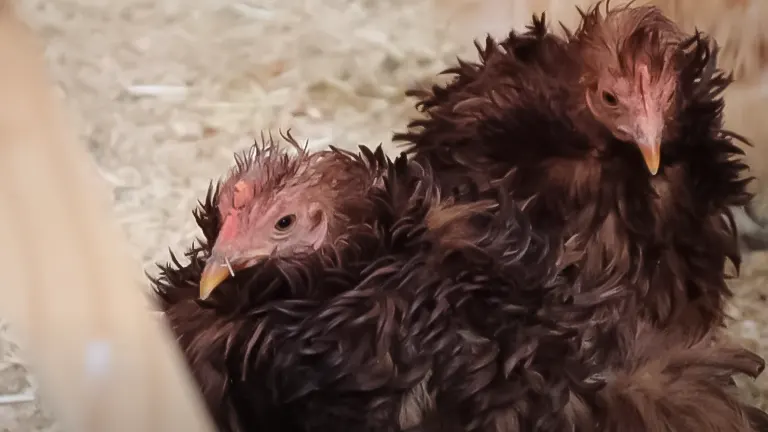
Moreover, reliance on such heat sources can impede the chickens’ natural adaptation processes to cooler temperatures, potentially making them less resilient to changes in weather.
An alternative strategy that I’ve found more effective involves focusing on the structural aspects of the coop, such as enhancing insulation and optimizing bedding materials, alongside dietary adjustments to bolster the chickens’ internal heat production. This approach not only mitigates the risks associated with heaters but also promotes a more natural acclimatization to the cold.
4. Feeding for Cold Weather
Nutrition plays a critical role in equipping chickens to withstand the cold. Implementing a diet that includes a higher proportion of grains during the evening can be particularly beneficial, as the digestion of grains generates additional body heat, helping chickens stay warm throughout the night.

Moreover, the provision of supplemental lighting in the coop can compensate for the reduced daylight hours of winter, supporting sustained egg production. However, it’s important to use lighting judiciously to avoid causing undue stress to the hens.

Adjusting feeding practices and light exposure in response to the colder and shorter days of winter can significantly impact the flock’s ability to maintain health and productivity, underscoring the importance of a well-considered approach to poultry care during the colder months.
5. Nest Box Management and Egg Collection
Maintain the cleanliness of your chicken nest boxes even during the colder months. This involves routinely replacing the nesting materials whenever they become excessively dirty, excessively worn, or if they’re not providing enough coverage.

Gather the eggs as promptly as possible. Generally, chickens lay their eggs by midday. Due to their high initial temperature of around 109 degrees Fahrenheit and their significant water content, eggs can freeze if not collected quickly.
Inspect each egg carefully upon collection. If you notice any with cracks in the shell, dispose of them immediately. Cracked eggs can harbor pathogens and lead to foodborne illnesses.
6. Supplemental Lighting for Egg Laying
To counteract the reduced daylight during winter and support continued egg laying, supplemental lighting is recommended.
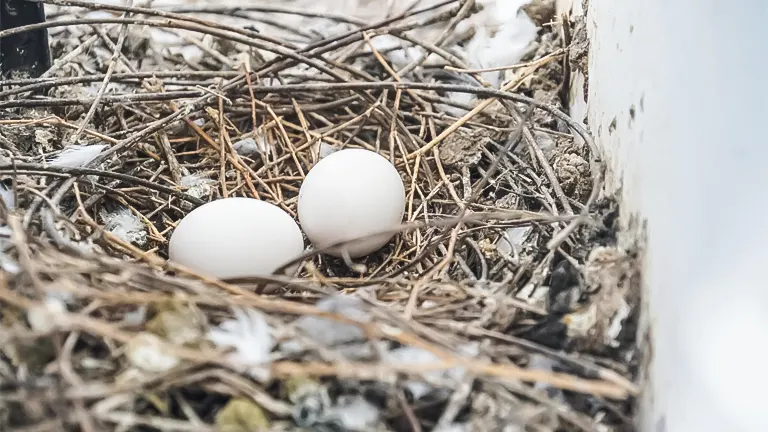
- Chickens ideally need about 14 hours of light each day for optimal egg production. Achieve this by setting up an ordinary lamp with a timer.
- It’s best to provide this additional light in the morning before the sun rises, as chickens have poor night vision.
- Avoid adding light after sunset; if the light suddenly goes off, the chickens might not be able to locate their roosts, leaving them to spend the night on the potentially cold ground.
- Post the winter solstice on December 20, the natural daylight will gradually extend. You should adjust the timer accordingly to ensure the chickens still receive about 14 hours of light daily.
Culling for Flock Welfare
Part of ethical flock management is assessing the well-being of your chickens prior to winter setting in. Examine your flock for any chickens that may not thrive in colder conditions, such as those that are older, underweight, or unwell. These birds might not cope well with the cold, leading to continuous stress or death. Although it’s a tough choice, culling these vulnerable chickens during the autumn can be the most compassionate action.
Preventing and Managing Frostbite
Frostbite typically affects the comb, wattles, and feet of chickens, leading to discoloration (black or gray) and a brittle texture. The condition is primarily induced by the combination of cold temperatures and high humidity levels. Managing moisture through effective ventilation and manure control is crucial during the cold season.
- To protect against frostbite, you can apply petroleum jelly to the combs and wattles of your chickens. However, note that petroleum jelly does not cure frostbite—it only acts as a preventative measure.
- Should you observe signs of frostbite or infection, it is crucial to seek professional veterinary assistance. Untreated severe frostbite can result in the loss of affected areas like the comb, wattle, or foot.
- In cases where a frostbitten chicken is being pecked by its flockmates, it’s important to isolate the affected bird to a separate area to recover without further stress or injury.
Related Articles:
- Best Bedding For Chickens
- Best Safe Chicken Coop Heater
- 8×8 Chicken Coop Plans
- Turning a Shed Into a Chicken Coop
- How to Make a Chicken Coop Out of Pallets
- Best Sand for Chicken Coop
- How To Insulate a Chicken Coop
- How To Heat a Chicken Coop
- How To Keep Water from Freezing in Chicken Coop
- How to Build a Chicken Coop
- How To Build Chicken Nesting Boxes
- How to Raise Happy and Healthy Chickens in Your Backyard
- When Can Chicks Go Outside? Timing and Tips for a Smooth Transition
- 12 Reasons why Ducks are Better than Chickens
- Best Automatic Chicken Coop Doors 2024: Expert Reviews & Buyer’s Guide
- Best Fans for Chicken Coop 2024: Effective Cooling Solutions Reviewed
Final Concluding Thoughts
Based on my research and personal experience, the answer to how cold is too cold for chickens depends on several factors, including breed, coop preparation, and care practices. While most chickens can withstand surprisingly low temperatures, the goal should always be to provide a comfortable and stress-free environment. This means preparing the coop, managing the diet, and understanding the specific needs of your breeds.
For backyard chicken keepers looking to navigate the winter months successfully, focusing on insulation, ventilation, and proper care over artificial heating, and choosing breeds suited to your climate can make all the difference. This holistic approach has not only kept my flock healthy through various winters but also allowed for continued egg production and minimal stress for both the chickens and myself.
Frequently Asked Questions
- What temperatures can chickens safely tolerate?
Chickens can generally tolerate cold weather well, with most breeds being comfortable down to 20°F (-6°C). However, temperatures below 0°F (-18°C) can pose risks to their health. - How does breed affect a chicken’s tolerance to cold?
The breed significantly impacts a chicken’s cold tolerance. Breeds with dense feathering and larger body mass, like Plymouth Rock and Orpington, are better suited for cold climates, while those with large combs and wattles, such as Leghorns, are more susceptible to frostbite. - What are the signs of frostbite in chickens?
Signs of frostbite include discolored (blackened or pale) combs and wattles, swelling, and areas that feel very cold to the touch. In severe cases, affected areas may eventually fall off. - Is it necessary to heat the chicken coop in winter?
Heating the coop is generally not recommended due to fire risks and the potential for making chickens reliant on artificial heat. Instead, focus on proper insulation and ventilation to keep the coop warm and dry. - How can I insulate my chicken coop for winter?
You can insulate your coop by adding layers of insulation material to the walls, sealing gaps to prevent drafts, and ensuring the bedding is deep and dry to provide a warm ground layer. - Why is ventilation important in a chicken coop during winter?
Ventilation helps remove moisture from the coop, reducing the risk of respiratory issues and frostbite by keeping the air dry and fresh, even in cold weather. - What changes should I make to my chickens’ diet in winter?
Increasing the grain portion of their diet can help chickens generate more body heat through digestion. Also, ensure they have access to fresh, unfrozen water. - Can chickens still lay eggs in cold weather?
Yes, chickens can continue to lay eggs in cold weather, but production might decrease without supplemental light to extend the daylight hours inside the coop. - How can I prevent frostbite on my chickens?
Prevent frostbite by keeping the coop dry, providing adequate ventilation, minimizing drafts, and applying petroleum jelly on combs and wattles for extra protection on very cold nights. - What should I do if my chicken shows signs of hypothermia?
If a chicken shows signs of hypothermia (lethargy, unresponsiveness, cold body), warm it up gradually by bringing it into a warmer environment, providing warm (not hot) fluids, and contacting a vet for further advice.
We’re eager to learn from your experiences! Share your stories and insights about managing your chickens during the cold months in the comments section below. Your personal tips and observations could greatly assist fellow poultry enthusiasts in understanding how cold is too cold for chickens, helping them make better-informed decisions for their flocks. Let’s help each other keep our chickens happy and healthy through the winter!

Edward Smith
Forestry AuthorWoodworking is about more than crafting; it's a harmonious connection with nature, mastering tools, and preserving our environment. I'm here to share my knowledge and experiences with you, forging a future where we can embrace wood's beauty and utility while safeguarding our forests' health and diversity.


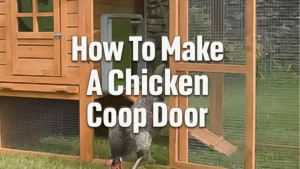





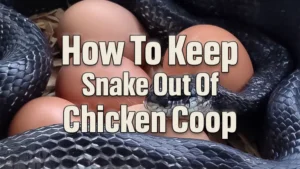
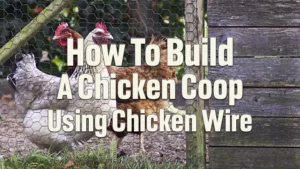
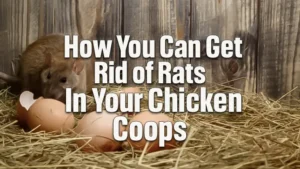


Leave your comment